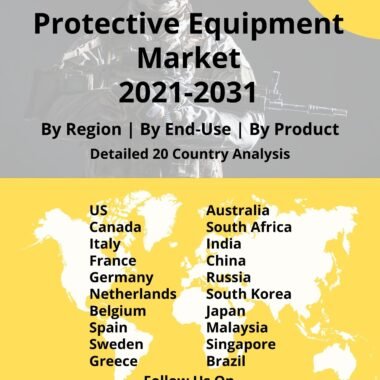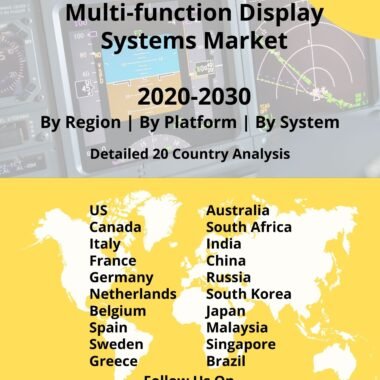Description
Satellite Power Electronics Market
Frequently Asked Questions of Global Satellite Power Electronics Market
Satellite power electronics refers to the electronic components and systems responsible for managing the power generation, distribution, and regulation onboard a satellite. These power electronics play a crucial role in ensuring the efficient and reliable operation of satellite power systems. Satellite power electronics manage the generation of power from solar panels or arrays, which convert sunlight into electrical energy. Power electronics components such as solar array regulators, maximum power point trackers (MPPTs), and voltage converters optimize the power output from the solar panels and regulate it for use by the satellite’s electrical systems. Power electronics components condition the raw power generated by the solar arrays, including voltage regulation, current limiting, and filtering. This ensures that the power supplied to the satellite’s electrical systems is stable and within the required operating parameters.
Satellite power electronics manage the charging, discharging, and monitoring of energy storage systems, typically batteries, used to store excess power generated by the solar arrays. Power electronics components such as battery charge controllers and voltage converters optimize the charging and discharging processes, ensuring efficient utilization of stored energy. Power electronics systems handle the distribution of power to various subsystems and components onboard the satellite. They include power distribution units (PDUs), which regulate and distribute power to different loads, and power management and control circuits that monitor and balance power consumption across the satellite.
Power electronics components, such as DC-DC converters and inverters, are responsible for converting the voltage levels between different subsystems or components. This is necessary to match the specific voltage requirements of different satellite systems and ensure compatibility and efficient power transfer. Power electronics components generate heat during their operation. Effective thermal management systems, including heat sinks and temperature sensors, are integrated into satellite power electronics to ensure optimal operating temperatures and prevent overheating, which can degrade performance and reliability. Power electronics in satellites are designed for high efficiency in power conversion processes. Advanced power conversion techniques, such as soft switching and resonant converters, are employed to minimize power losses and maximize the overall energy efficiency of the satellite power system.
Major factors driving Satellite Power Electronics Market Growth
Advancements in satellite power electronics have resulted in more efficient, reliable, and compact power systems for satellites. They have contributed to improved mission capabilities, extended operational lifetimes, and increased overall performance of satellites in various applications, including Earth observation, telecommunications, scientific research, and deep space exploration. Continued research and development in power electronics technology are expected to drive further advancements, enabling future satellite missions with higher power efficiency and enhanced capabilities.
Trends influencing the Satellite-Power Electronics Market Size
Satellite power electronics have advanced in terms of radiation hardening to withstand the harsh space radiation environment. Radiation-tolerant designs, including radiation-hardened components and redundant circuitry, are employed to minimize the impact of radiation-induced errors and ensure the reliable operation of power electronics systems throughout the satellite’s mission. MPPT algorithms, used to extract maximum power from solar arrays, have become more sophisticated and adaptive. Advanced MPPT techniques incorporate machine learning algorithms, adaptive control, and real-time monitoring of solar panel characteristics, enabling more accurate and efficient power extraction in varying solar conditions.
Satellite-Power Electronics Market Forecast & Dynamics
Advancements in satellite power electronics have focused on increasing efficiency, reducing size and weight, enhancing reliability, and improving overall performance. These advancements enable satellites to operate with higher power densities, longer mission lifetimes, and greater power system flexibility, supporting a wide range of applications including Earth observation, telecommunications, scientific research, and space exploration. The market forecast incorporates a thorough market size and market analysis. The market analysis includes regional market size, opportunities, drivers, and restraints. Country-wise market size is also included in the regional analysis.
Satellite Power Electronics Market Analysis for Recent Developments
The HyperX family of radiation-hardened software-defined microprocessors is available from Coherent Logix Inc. in Austin, Texas. According to Michael Doerr, Co-CEO and CTO at Coherent Logix, one of the family’s early variants, the hx2100, has seen design-ins in a range of space projects. “A fully software-defined platform for communications, video imaging, AI, and adaptive processing on the satellite, with software-defined networking and active cyber security,” according to the Coherent Logix HyperX series of programmable space processors. You now can do so.” In Palm Bay, Fla., Renesas Electronics America provides radiation-hardened power conditioning and control components for space applications. Power-hungry components for space systems, such as the Versal field-programmable gate array (FPGA) from Xilinx Inc. in San Jose, Calif., are driving power innovation for space.
The Beyond Gravity Lynx satellite computer is 250 times more powerful than standard onboard computers. The Lynx computer can process data that is already in orbit rather than processing it on Earth, saving time, energy, and money. The Lynx computer can assess the appropriateness of all photos and only transmits legitimate images. It is a 6U Space VPX single-board computer built for crucial activities in a severe radiation environment, with flexible communication, interface, and mass storage capabilities. The computing power is provided by a four core ARM processor with more than 30.000 DMIPS and onboard flash storage that is rated for 15 years in low earth orbit and beyond.
The global landscape of satellite power electronics has undergone substantial advancements, marking a transformative era in space technology. Power electronics are crucial components aboard satellites, responsible for managing and distributing electrical power generated by solar panels or other sources. Efficiency improvements in satellite power electronics include enhanced power conversion systems, voltage regulation, and energy storage solutions. These innovations contribute to the optimization of energy utilization and increase the overall performance and lifespan of satellites.
Technological advancements in power electronics have enabled the development of small, lightweight, and more reliable components. This is particularly important for small satellites, CubeSats, and other miniaturized spacecraft, allowing for improved power management in constrained space environments. Integration of smart power management systems, often coupled with advanced software algorithms, facilitates autonomous decision-making and adaptive responses to varying mission conditions. This autonomy contributes to operational flexibility and mission success. Global efforts in standardization and collaboration across space agencies, private companies, and international missions promote interoperability and compatibility of satellite power electronics. These developments underscore a commitment to advancing the capabilities of satellite systems, fostering innovation, and supporting diverse applications, including Earth observation, communication, and scientific space research.





